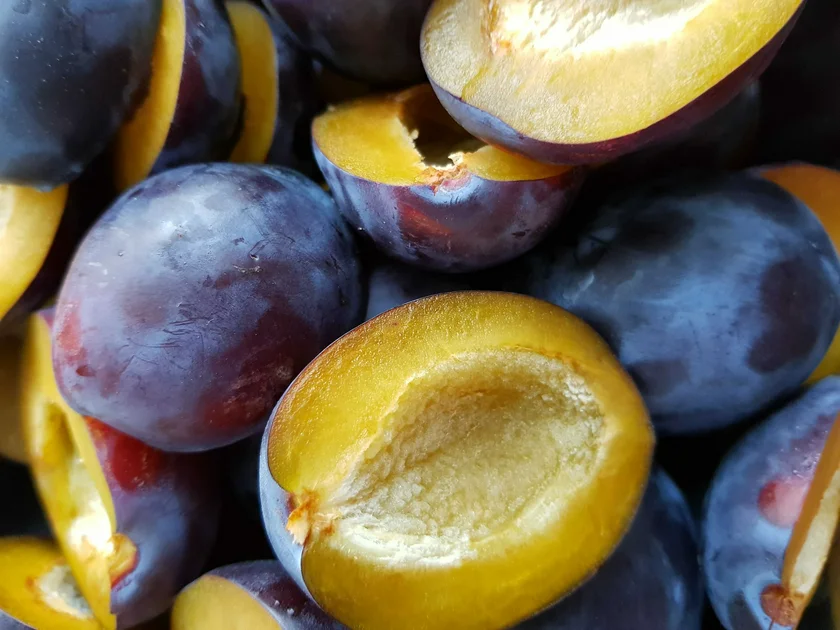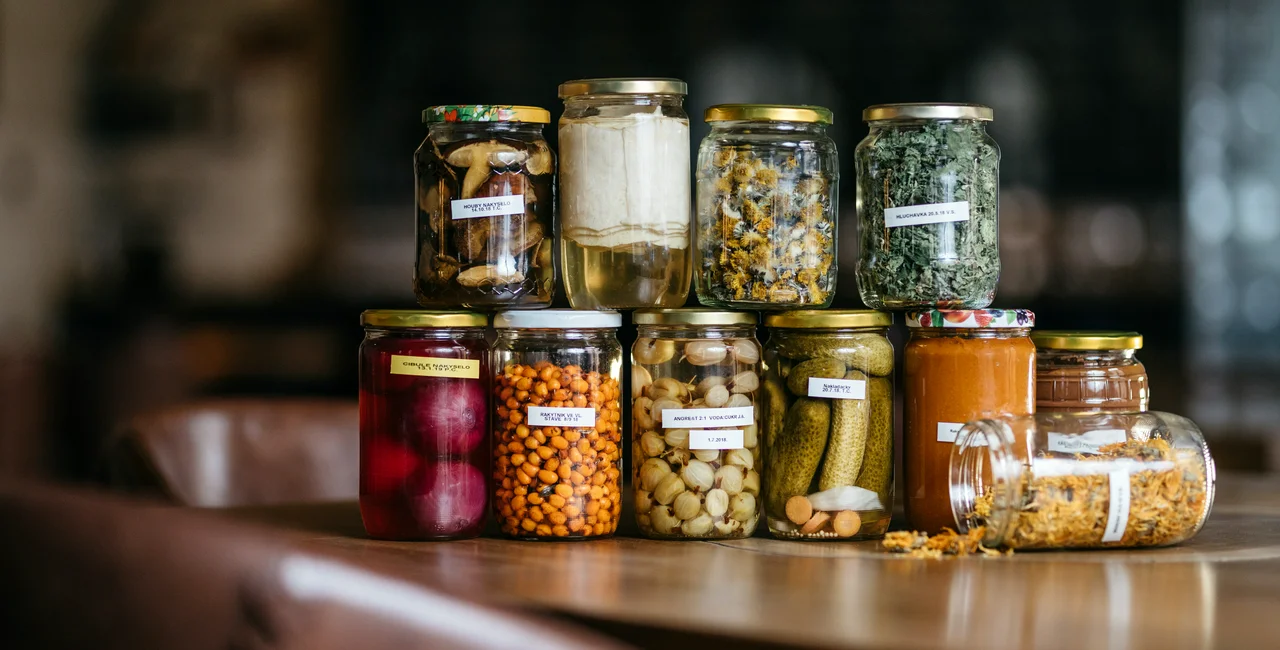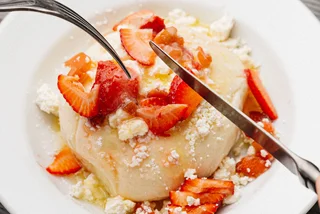Compotes embody the essence of summer and serve as a delightful memory during the winter months. It's a cherished tradition among many Czech households, not just those in the countryside, to preserve the bounty of Czech gardens.
The skill of cooking fruits in a way that preserves their freshness, and flavor, and sustains them for months in your pantry is an art often passed down from generation to generation, like a treasured heirloom.
We gleaned some valuable insights from the chefs at Prague's Eska who craft and serve their own preserves in their restaurants. As the fruits ripen, now is the prime moment to dive into the compote-making adventure.
Preserving is a Czech tradition
Boiling (and heat sterilization) in glass surged in popularity during the 18th century and thrived until the 1960s, when freezing gained traction. In most households, compotes were sterilized using preserving pots, positioned on a wire rack or cloth with water up to the lid.
Nowadays, ovens (preheated to around 175°C) are also employed for sterilization. The compotes rest in a 2-cm layer of water on a baking tray and continue preserving until bubbles rise in the brine, nearing the lid. Afterward, the oven is turned off, allowing the jars to remain inside for an additional 30 minutes. Notably, the dishwasher can also serve as a preserving spot while you tackle your dishes.
Maintaining impeccable cleanliness is paramount. The cooking process begins with a thorough washing of the jars (and lids) to eliminate any unwanted bacteria. Chefs employ various methods like dishwashers, kettles, hot water, or ovens. The washed jars are heated to 130°C in a water bath for 10 to 20 minutes. You can even pop them in the microwave with a touch of water. One caveat: strict hygiene must accompany the entire compote-making process. After sterilization, refrain from wiping the jars; instead, place them on a clean surface, ideally using tongs.
Sugar acts as a preservative. Compote is dependent on sugar, which takes on the role of preservative and is responsible for the shelf life of the compote fruit. The infusion must contain at least 50 percent sugar, i.e. half a kilo of sugar per liter of water.
Tangy is terrific! Lemon juice or citric acid – both lend a zesty boost when added to the finished (but not boiling!) brine, ensuring that vibrant citrus notes remain intact. At Eska, they rely on a kilo of lemons (or a packet of citric acid) for every 10 liters of brine. Incorporating acid is a smart move for fruits you intend to blend into savory dishes, like roasted or dried meats.
Chef's tip
For a tantalizing sweet and sour Eska brine, you'll need 6 parts water, 2 parts fermentation vinegar, a tablespoon of salt, a tablespoon of sugar, and spices to suit your taste. Less ripe strawberries or gooseberries often meet the salty pickle fate. Salt steps in as the preservative for the moment – at Eska, they mix the brew in a 30 g salt per liter of water ratio.
Add some flair! Chefs usually immerse most fruits into a foundational liqueur, as it weaves harmoniously through recipes. Then, the fun begins as they infuse some compotes with fragrant herbs and spices, which meld beautifully within the brine. The strawberry compote welcomes elderflower, while plums harmonize well with red wine, star anise, and cinnamon. Apricots get a dash of rum or cumin to spice things up.
Not all fruits are compote-worthy. This hinges on their ripeness and texture, which can vary according to the fruit type. Firmer, not overly ripe, and unblemished fruits are preferred. For raspberries and blackberries, lean towards less ripe ones – the compote's juice will wonderfully complement their natural sweetness.
Following the renovation of the Eska bakery's upper floor, a new restaurant called Štangl has opened its doors in Prague. The restaurant primarily offers guests locally sourced ingredients from both fields and the wild, prepared sustainably. Leading the team of chefs is Martin Štangl, the longtime head chef of Eska, a restaurant acclaimed with a Michelin Bib Gourmand.
Keep the stones and pits. For apricots and plums, let the stones stay put at the end! This practice preserves their color and imparts a more intense flavor and aroma. Cherries, don't pit them! They'll retain their shape beautifully within the jar, just like gooseberries, which find their way into the compote with their stems intact.
Uniformity is key. When cutting fruits for compotes – smaller pieces might soften more than desired during the sterilization process. For this reason, similarly, textured fruits are often paired together.
Don't overfill. Ensure your compote rests about a centimeter below the jar's rim. Overfilling creates excess oxygen within a half-full jar, making proper sealing challenging. Additionally, all the fruit should be completely submerged, as this prevents early spoilage.

Brining isn't the only route. Fruits can be preserved on their own or coated in honey or sugar. Depending on the fruit's hardness and size, chefs regulate the sterilization process – 'dry' compotes typically spend a maximum of 10 minutes at 80°C.
Temperature matters, so a thermometer is handy. Sterilization involves precise timing at the right temperature to effectively warm the fruit. Seasoned cooks often use a kettle set to 100 percent steam mode, leaving compotes in for 25 minutes at 85°C. This method works at home, too, using an oven.
Jar size impacts preservation time. A bubbling brine indicates the fruit has reached the desired temperature, signaling it's time to remove the compotes.
Every minute counts. Sterilization duration influences taste and, more crucially, the compote's texture. The fruit must not boil! At Eska, they pour warm brine over it, slightly reducing boiling time. This approach ensures your fruit maintains its desired consistency and preserves the vitamins that could be lost through prolonged cooking.
Sealing is crucial. At the start of the new season, consider investing in fresh lids – multi-threaded ones aren't entirely foolproof and could expose your precious compotes to unwanted microbes. At a minimum, examine last year's jars, as high temperatures can cause cracks!
Chef's tip
A neat trick: Various capping techniques exist. Eska favors screw caps, flipping sterilized jars upside down – within ten minutes, the cap firmly adheres to the jar, sealing it snugly.
Cool gradually. Sterilized preserves, particularly jams, and marmalades, should cool gradually as the contents shrink, fostering a protective vacuum within the jar.
In the Czech Kitchen is a weekly column written in cooperation with the culinary experts from Ambiente. Established in 1995, the Prague-based collective of pubs, restaurants, and fine-dining outlets has transformed the Czech culinary landscape and lent to the widespread awareness of quality food service and production in Czechia. Follow their socials or book your table at www.ambi.cz.












 Reading time: 5 minutes
Reading time: 5 minutes 


















